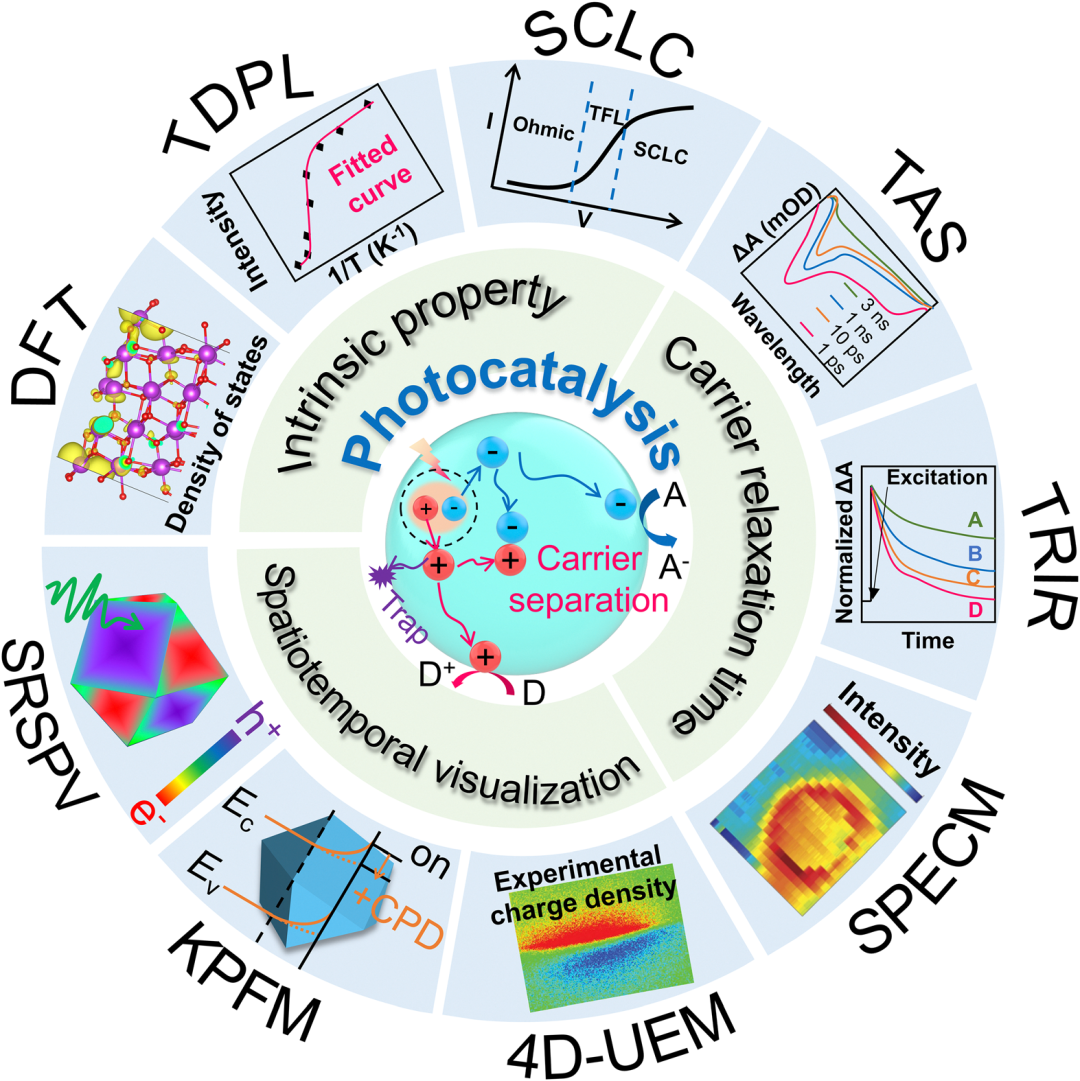
First Author: Jun Wang
Corresponding Authors:Central South University, Liu Min,Munich University, Emiliano Cortes
DOI:https://doi.org/10.1039/D5CS00512D
Semiconductor-based light-assisted catalytic reactions, utilizing solar energy for chemical fuel production and pollutant treatment, largely depend on the separation and migration of carriers. Despite significant efforts to enhance carrier separation, the understanding of carrier transfer dynamics remains limited, hindering large-scale applications. This paper systematically investigates the characterization of carrier transfer dynamics, focusing on the intrinsic properties of semiconductors, carrier relaxation methods, and spatial visualization. It also discusses plasmonic metal catalysts, a new class of photocatalysts with unique carrier dynamics. Furthermore, advanced techniques and metrics for assessing carrier transfer are evaluated, providing insights for the development of high-performance catalysts. Finally, the future development and standards for characterizing carrier transfer dynamics are summarized and anticipated to improve photocatalytic applications.

Fig. 1 Schematic diagram for photo-related catalytic process, carrier migration, and the advanced characterizations for probing carrier transfer dynamics. D: electron donor. A: electron acceptor. TRPL: time-resolved photoluminescence. SCLC: space-charged limited current. TAS: transient absorption spectroscopy. TRIR: time-resolved infrared. SPECM: scanning photoelectrochemical microscopy. 4D-UEM: four-dimensional ultrafast electron microscopy. KPFM: kelvin probe force microscopy. SRSPV: spatiotemporally resolved surface photovoltage. DFT: density functional theory.
Transfer dynamics of photo-generated carriers in catalysis
https://doi.org/10.1039/D5CS00512D